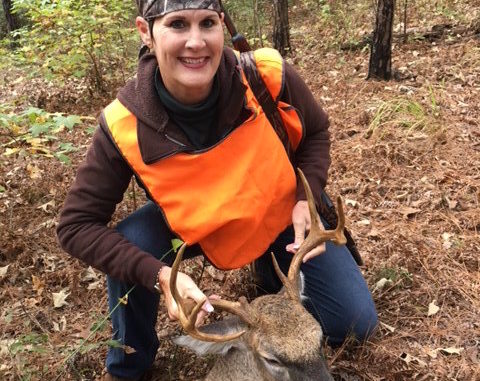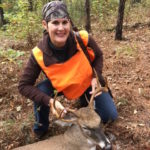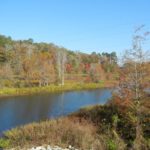
We don’t always think about it very much, but Louisiana has an abundance of public land available for hunting. That certainly is not true in every state, so we should count our blessings.
More than 60 state-owned and/or operated wildlife management areas are distributed throughout the state. In addition, federal lands offer even more hunting opportunities.
Four federal agencies administer land available for hunting and fishing. The Army Corps of Engineers lists 38,822 acres in Indian Bayou, Old River Control & Lock and Bonnet Carre Spillway Areas. The National Park Service has 23,500 acres at Crown Point in Jefferson Parish. The national wildlife refuge System offers 550,000 acres spanning 29 parishes.
Finally, the U.S. Forest Service provides 604,000 acres in Kisatchie National Forest.
By my tally that’s 1,216,322 acres of federal land available for some form of hunting, fishing and other outdoor recreational activities.
I have written a little in the past about Tensas National Wildlife Refuge and its important role in restoration of the Louisiana black bear. But Tensas NWR also produces some whopper bucks, along with the opportunity to hunt some of the last un-disturbed Mississippi River bottom in the United States.
But the federal land with which I am most familiar is Kisatchie National Forest.
KNF has five Ranger Districts — Calcasieu, Kisatchie, Catahoula, Winn and Caney — along with two units. The Evangeline Unit lies in Rapides Parish, while the Vernon Unit is in the parish of the same name.
I grew up and still reside within a stone’s throw of the Evangeline Unit, and have hunted and fished there all my life. My first squirrel and deer were taken on Evangeline, and I still visit three or four days a week, bicycle riding the trails or fishing on Kincaid Lake.
It’s home.
KNF offers a variety of hunting opportunities, and the Forest Service folks work closely with the Louisiana Department of Wildlife and Fisheries on season dates and all other applicable regulations. A complete listing of hunting schedules and rules is included in the Louisiana Hunting Regulations annual publication.
Cooperation between LDWF and USFS-KNF extends into the realm of law enforcement, as well.
Not surprisingly, Forest Service law enforcement officers are spread pretty thin and have a lot of land to cover. So LDWF Wildlife Enforcement Agents have always worked with our federal partners on KNF.
In fact, a significant amount of state law enforcement effort is put forth on KNF in Central Louisiana.
As might be expected, such a large area of public land with a wealth of access roads in out-of-the-way places is prime illegal trash dumping territory. It’s also a tempting place to cultivate marijuana and engage in other illegal narcotics activity.
And those are only a couple of the illegal activities wildlife agents address in addition to the standard array of hunting and wildlife violations typical in public areas.
But I believe the quality of law enforcement work and the effort put forth on federal lands keeps poaching and other problems from getting out of hand.
So how good is the hunting on KNF? Well, if you are a little tired of the crowds on your favorite WMA, it is definitely worth a look.
The turkey hunting is surprisingly good. I recall one year when we still had a three-gobbler limit. I limited out by the Wednesday of the first week of season.
Small game hunting, particularly for squirrel, has always been nice, and KNF still has plenty of hardwoods along the creek bottoms.
Deer hunting on KNF is pretty good if you spend a little time preseason locating deer sign and oaks with acorns. Maybe while squirrel hunting.
Up until a few years ago, running deer with dogs was allowed. It was pretty controversial and is now prohibited. But I have had a few hunters tell me deer numbers are better since the ban.
Here’s a tip: Some dandy bucks are taken every fall on Red Dirt National Wildlife Refuge.
Feral hogs are also found on KNF, so keep an eye out for some pork — but dogs are not allowed for hog hunting, either.
Dogs are allowed for squirrel, rabbit, quail, woodcock, waterfowl and raccoon. But check the federal lands schedules and hunting dog usage regulations in the LDWF Hunting Regulations booklet for details.
Camping is permitted on KNF, but contact the local ranger district office for additional camping information.
The Evangeline Unit is where Kincaid and Valentine Lakes are located. Both have camping and recreation areas with fishing docks and hiking trails in areas where hunting is prohibited.
So combine a family camping trip with a hunt and everyone will have some fun. The Kincaid Lake Camping Area offers full camper hookups with very reasonable fees. Bring a camera and check out the bald eagle nest at Kincaid Lake, along with some very pretty fall scenery.
I’ll wager that most Louisiana hunters are not even aware of the opportunities KNF and other federal lands have to offer.
Check them out. You might be pleasantly surprised.
Got a question? Ask Keith!
If you have a question about wildlife and fisheries enforcement, shoot a note to Keith LaCaze at klacaze15@att.net.




